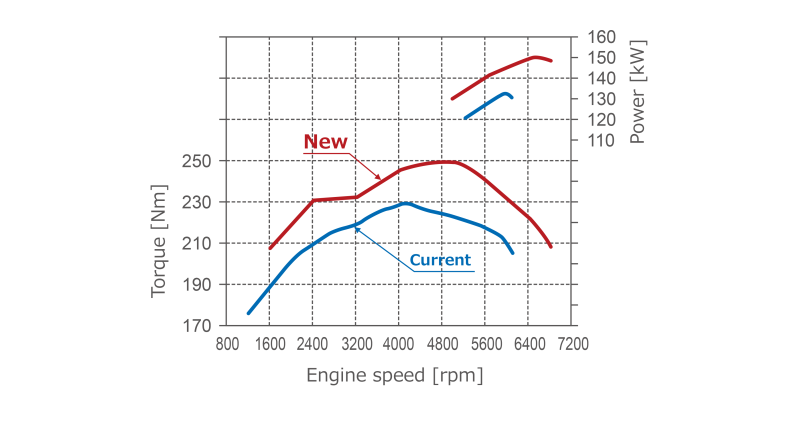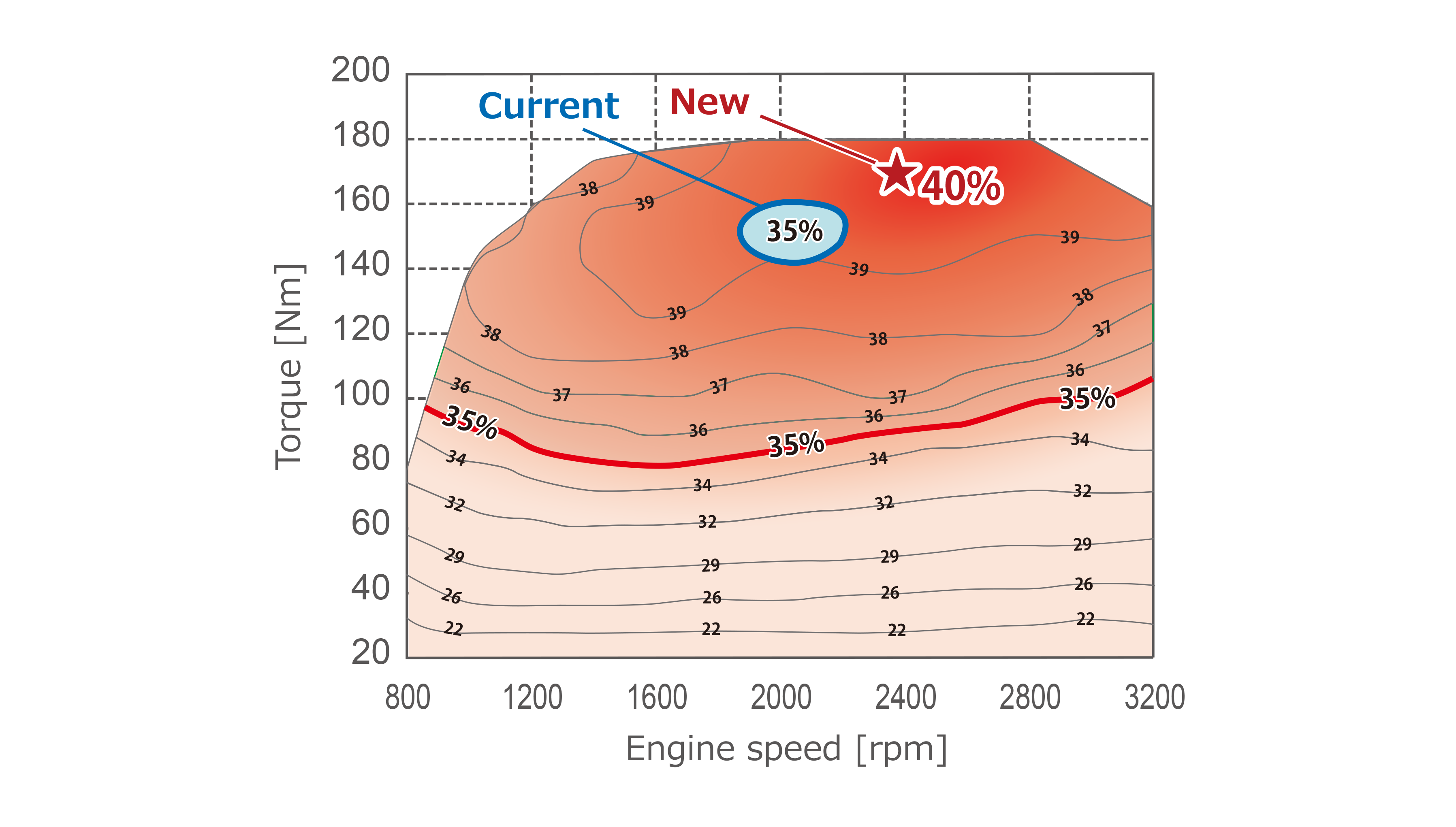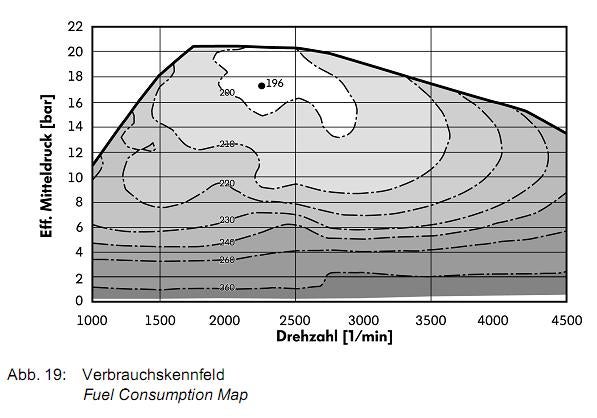 "bhtooefr" (bhtooefr)
"bhtooefr" (bhtooefr)
12/13/2016 at 22:50 • Filed to: smug alert, toyota, camry, lexus, es, es 300h, hybrid, rav4, thermal efficiency, engine
 10
10
 21
21
 "bhtooefr" (bhtooefr)
"bhtooefr" (bhtooefr)
12/13/2016 at 22:50 • Filed to: smug alert, toyota, camry, lexus, es, es 300h, hybrid, rav4, thermal efficiency, engine |  10 10
|  21 21 |

Last week, Toyota
!!!error: Indecipherable SUB-paragraph formatting!!!
for vehicles on their new architecture. In addition to several new transmissions, they announced a new modular engine family supporting varying cylinder displacements (much like Mazda’s SkyActiv-G family) and cylinder count, and detailed the first variant of that, the 2.5 liter Dynamic Force (what an awful marketing name) engine, which is almost certainly destined for the new Camry.
So, I’m going to regurgitate some of what Toyota’s said, that other blogs have already covered, but if you want to get it straight from the horse’s mouth... just read that press release, read !!!error: Indecipherable SUB-paragraph formatting!!! , and if you’ve got 45 minutes to listen to an interpreter do a not that great job of translating Japanese to English on the fly, watch !!!error: Indecipherable SUB-paragraph formatting!!! , although it covers the transmissions, too. The video goes into some detail that the web pages don’t.
Also, I’m not an engineer, but I find this technology interesting.
It seems that Toyota’s focus with this engine was on promoting tumble, or swirl, in the intake air, to promote good air/fuel mixture, while not excessively restricting the intake air. This is especially important, given that it’s using direct injection - good air/fuel mixture is key to keeping particulate emissions low (and they’re even claiming lower particle count than the motors they’re replacing, despite moving from port injection to Toyota’s port and direct injection system). In addition, they appear to be running Atkinson cycle even on the standard variant of the engine, with very high static compression (13:1 for the standard variant, 14:1 for the hybrid variant), a very long stroke (1:1.2 bore:stroke ratio, which is absurdly undersquare), electric cam phasing (other Toyota engines have this already), an electric water pump (the hybrids have had this for over a decade now), and variable displacement oil pump, all in an attempt to get maximum work out of the fuel, and minimize friction. Note that there’s no turbo here - this is all still naturally aspirated.
The upshot is that the hybrid variant of this engine is the most thermally efficient gasoline engine ever produced, at 41% peak thermal efficiency. In addition, the standard variant is 40% thermally efficient at peak, matching the previous best production gasoline engines (which, if I recall correctly, are the Gen 4 Prius’s variant of the 2ZR-FXE, and some of the Mazda SkyActiv-G engines).
To put that into perspective, the current base Camry’s engine is 35% efficient, and the
best
hybrid variant of the current 2.5 liter is 38.5% efficient, with direct injection (the Camry isn’t using that best version, either). Diesels can be better - for instance, the Volkswagen CBEA 2.0 liter (as used in the 2009 Jetta TDI) got 42.7% peak while cheating and while not regenerating its DPF, or the Volkswagen ALH 1.9 liter (as used in various 1998-2003 TDIs) got 42.5% peak. Ultimately, freaking
gasoline
engines march ever closer to making diesels irrelevant as a solution for GHG emissions.
Another way to put that in perspective is this partial BSFC graph that Toyota released, comparing the tiny sweet spot that you’d get 35% efficiency at in the 2AR-FE, versus the huge area where you’d get 35% efficiency in the new conventional engine:

As far as performance... well, let’s compare.
2AR-FE (think Camry, RAV4): 178 hp @ 6000 RPM, 170 lb-ft @ 4100 RPM, 35% thermal efficiency at peak
Dynamic Force 2.5: 202 hp @ 6600 RPM, 184 lb-ft @ 4800 RPM, 40% thermal efficiency at peak
One thing, other than the thermal efficiency improvement, stands out at me here, and that’s the increase in power and torque. The numbers don’t show it, but Toyota’s torque curve does, that increase is throughout the power band:

And, I believe that this thing is going to be the base Camry engine. This makes me really, really wonder about the rumors that there’ll be a 2.0T for the Camry - with 202 hp, there’s not much room in between this and the V6 (which is also rumored to still be in the Camry). Toyota’s also claiming 12% faster acceleration, and 20% better fuel efficiency, from powertrain improvements alone (that’ll also include switching from the current 6-speed automatic to the new 8-speed family that they also detailed, and I think the RX 350, Highlander, and Sienna are now using). That would make a base Camry that can do 0-60 in about 7.0 seconds, with fuel economy in the ballpark of 29 miles per gallon city, 40 highway.
But, let’s look at hybrid motors, now.
2AR-FXE (Camry/ES Hybrid, RAV4/NX Hybrid): 156 hp @ 5700 RPM, 156 lb-ft @ 4500 RPM, I don’t have thermal efficiency numbers, but I’d guess around 38% at peak
2AR-FSE (IS/RC/GS 300h, Crown Hybrid): 178 hp @ 6000 RPM, 163 lb-ft @ 4200-4800 RPM, 38.5% thermal efficiency at peak
Dynamic Force 2.5 for hybrids: 174 hp @ 5700 RPM, 162 lb-ft @ 3600-5200 RPM, 41% thermal efficiency at peak
It is worth noting that Toyota’s not comparing this motor to the 2AR-FSE, but I thought I’d throw it in anyway. In any case, they’re claiming 10% better acceleration for the hybrid, and again, 20% better fuel efficiency, also from powertrain improvements alone (but that does include the new hybrid system with all of its massive improvements, instead of a somewhat downsized version of the 2004 RX 400h’s system). That would be somewhere around 6.5 seconds to 60, and in the ballpark of 50 miles per gallon city, 46 highway, ignoring any aerodynamic or weight improvements. That is... quite impressive.
Oh, and Toyota’s claiming that this family’s more responsive to throttle input than the engines it’s replacing, too. The phrase “fun to drive” is in their press release. Surprisingly, seeing as this is probably launching in the Camry, the phrase “grounded to the ground” appears nowhere... but then, this is about powertrains, not suspension.
I might also do a piece on my opinions on the Multi-Stage Hybrid gearbox they detailed in that, but my questions - namely, whether the thing fakes being a 10-speed auto even in drive - weren’t really answered by that release...
 Jordan and the Slowrunner, Boomer Intensifies
> bhtooefr
Jordan and the Slowrunner, Boomer Intensifies
> bhtooefr
12/13/2016 at 22:59 |
|
2AR-FSE is too close to 2AR-SE
 G_Body_Man: Sponsored by the number 3
> bhtooefr
G_Body_Man: Sponsored by the number 3
> bhtooefr
12/13/2016 at 23:00 |
|
All I got out of this was that if the overall powerband is somewhat linear, we can extrapolate that...

VVT-i hits hard as fuck, yo!
 victor
> bhtooefr
victor
> bhtooefr
12/13/2016 at 23:02 |
|
This makes me wonder what sort of figures they can get out of a turbo engine
 bhtooefr
> G_Body_Man: Sponsored by the number 3
bhtooefr
> G_Body_Man: Sponsored by the number 3
12/13/2016 at 23:02 |
|
Yeah, I’m not sure what that flat area from 2400 to 3200 is.
Or are you referring to the power graph only showing the top portion? Because... that’s not actually necessary to extrapolate the power graph. It’d be amusing if you had to rev a Camry to 5000 to get any meaningful power, though.
 G_Body_Man: Sponsored by the number 3
> bhtooefr
G_Body_Man: Sponsored by the number 3
> bhtooefr
12/13/2016 at 23:07 |
|
The extrapolation is more between the torque curve after the DI on the D-4S kicks in and the power curve. If it doesn’t do anything weird, it looks like it will be mostly one continuous surge of power from 3900 to 6500 or so.
 atfsgeoff
> bhtooefr
atfsgeoff
> bhtooefr
12/13/2016 at 23:12 |
|
higher thermal efficiency makes the world a better place for everyone. Thanks, Toyota!
 bhtooefr
> victor
bhtooefr
> victor
12/13/2016 at 23:15 |
|
I actually think they’re really, really resisting turbocharging here, because of what it does to efficiency at high load, what it does to cost and reliability, and what it does to throttle response.
So, they’ve got two main turbo engines that I can think of.
The first is the 8NR-FTS, a 1.2 liter 4-cylinder turbocharged engine making 114 hp @ 5200, and 140 lb-ft @ 1500. That engine is 36% efficient at peak. It’s intended primarily for Europe.
The other one is the 8AR-FTS, a 2.0 4-cylinder turbo motor, 235-241 hp depending on tune @ 4800-5600, 258 lb-ft @ 1650-4000 RPM, also at 36% efficiency at peak. It’s intended primarily for Lexus, and it was rumored for the Camry, but I really, REALLY doubt it at this point.
 LongbowMkII
> bhtooefr
LongbowMkII
> bhtooefr
12/13/2016 at 23:23 |
|
I could see it replacing the v6 easily enough.
 HammerheadFistpunch
> bhtooefr
HammerheadFistpunch
> bhtooefr
12/13/2016 at 23:26 |
|
Atkinson cycle or wide band phasing? i.e both otto and modified atkinson
 LongbowMkII
> G_Body_Man: Sponsored by the number 3
LongbowMkII
> G_Body_Man: Sponsored by the number 3
12/13/2016 at 23:30 |
|
I’m excited by the ~6800rpm redline. Thought those days were leaving. It’s no 2zz/F20, but I thought meeting emissions would kill off the high output high rpm n/a motor. With an undersquare stroke at that.
Kinda hope a manual finds it’s way in there.
 bhtooefr
> LongbowMkII
bhtooefr
> LongbowMkII
12/13/2016 at 23:32 |
|
The 8AR-FTS? It’d actually be a pretty big downgrade in terms of total power, although it’d feel a bit gruntier, maybe.
The current 2GR-FE is 268 hp @ 6200 RPM, 248 lb-ft @ 4700 RPM.
I think the current rumors are that it’ll move to the 2GR-FKS, as used in the Tacoma, GS 350, RX 350, Highlander, and Sienna. That motor adds direct injection, wide-authority VVT, and the ability to enter Atkinson cycle operation at lighter loads. Tacoma tune is 278 hp @ 6000, 265 lb-ft @ 4600. Highlander/Sienna tune is 296 hp @ 6600, 263 lb-ft @ 4700. My guess is it’d be that Highlander/Sienna tune if it’s that engine - I can’t see it getting the RX tune (it’s only slightly more torque anyway), and I can’t see it getting the GS tune because of premium.
 G_Body_Man: Sponsored by the number 3
> LongbowMkII
G_Body_Man: Sponsored by the number 3
> LongbowMkII
12/13/2016 at 23:32 |
|
Me too. You did say “no more boring cars,” right Akio?
 bhtooefr
> HammerheadFistpunch
bhtooefr
> HammerheadFistpunch
12/13/2016 at 23:33 |
|
I’m not entirely sure, to be honest - they say Atkinson cycle on their site, but they also talk about control of delayed closing.
I’m guessing that if they’re talking about 13:1 compression, and they’re comparing these engines to ones that run on regular, it’s probably Atkinson all the time. They haven’t talked about long exhaust runners like Mazda has, and they don’t have the Mazda volcano pistons.
 LongbowMkII
> bhtooefr
LongbowMkII
> bhtooefr
12/13/2016 at 23:37 |
|
It’d be a lighter more flexible package. But then again the platform underpins so much of the lineup that it’s likely be engineered with a v6 in mind anyways.
 camarov6rs
> HammerheadFistpunch
camarov6rs
> HammerheadFistpunch
12/13/2016 at 23:52 |
|
I assume this is running VVT on both exhaust and intake so idk why they wouldn’t want to run both if they could.
 jimz
> bhtooefr
jimz
> bhtooefr
12/14/2016 at 07:11 |
|
one thing to keep in mind is that for gas engines, those peak efficiency numbers are only achieved at wide-open-throttle (WOT) at the engine’s inherent torque peak. i.e. where the engine is pretty much never being used. anywhere lower than that and the pumping losses due to the throttle torpedo the engine’s thermal efficiency.
this is one of the big reasons diesels have typically had such good real-world fuel economy. they don’t use a throttle for controlling engine output so those pumping losses aren’t there.
 bhtooefr
> jimz
bhtooefr
> jimz
12/14/2016 at 07:27 |
|
That’s absolutely an important thing to bring up, although I think these engines have some solutions for that, as well - VVT-iE allows intake cam timing can be retarded to push excess charge out of the cylinder, to a variable degree. And, EGR can be used to displace intake air, further reducing pumping losses.
That’s also part of why hybrids see benefit everywhere, not just city driving - at lighter loads on the highway, the hybrid system can shut the engine off, or send power into the battery to increase load.
I’m going to put a couple images here - the partial BSFC map from above (which is stated in percentage thermal efficiency), combined with the VW CBEA’s BSFC map (which is stated in grams per kWh - for diesel, the formula to convert to percentage thermal efficiency is 1/(BSFC × 0.0119531)). Also, they used BMEP instead of torque output, but that directly relates to torque output, so...


Ultimately, for the diesel, that 240 g/kWh line is roughly 35% thermally efficient, everything above it is better. And, that is a lower percentage of available torque at which it’s 35% efficient... but that’s not that far off.
 ADabOfOppo; Gone Plaid (Instructables Can Be Confusable)
> bhtooefr
ADabOfOppo; Gone Plaid (Instructables Can Be Confusable)
> bhtooefr
12/14/2016 at 08:33 |
|
The new RX does indeed use an 8-speed auto box.
Damn thing hunts for gears constantly.
 bhtooefr
> ADabOfOppo; Gone Plaid (Instructables Can Be Confusable)
bhtooefr
> ADabOfOppo; Gone Plaid (Instructables Can Be Confusable)
12/14/2016 at 08:35 |
|
That’s a shame, but pretty typical.
(I’m also not a fan of stepped automatics in general, though, because they’re so often done badly...)
 Future next gen S2000 owner
> bhtooefr
Future next gen S2000 owner
> bhtooefr
12/14/2016 at 11:42 |
|
I wonder if the thermal efficiency across the rev range is available. Does higher peak thermal efficiency correlate/cause higher thermal efficiency across various engine load and rpm combinations?
 bhtooefr
> Future next gen S2000 owner
bhtooefr
> Future next gen S2000 owner
12/14/2016 at 13:22 |
|
Higher RPM generally has lower thermal efficiency due to the effect of friction, so there’s that to consider. That’s why you short-shift when you’re driving for efficiency, and why modern automatics want to stay so low in RPM.
And, various tuning mechanisms (similar to those used to tune the powerband - cam lift, duration, and timing, etc., etc. - but also the tradeoff between raw flow versus swirl - which, Toyota’s basically said that they can get both, improving efficiency and power especially at lower RPM with better swirl, while also improving power at higher RPM with good flow) can shift where the peak is, and that will also shift where the efficient RPMs are. (Shifting the peak down in RPM tends to improve the peak efficiency, though, due to the reduced friction.)
Basically, it depends on why the peak is higher.
In the case of this engine, seeing as, at least in the restricted (up to 3200 RPM) rev range they’re showing, it’s getting 35% thermal efficiency at about 40-60% load all the way from ~900 to 3200 RPM, whereas the old engine only got that efficiency in a tiny range of high load around 1800-2200 RPM... yes, it is improving efficiency everywhere.